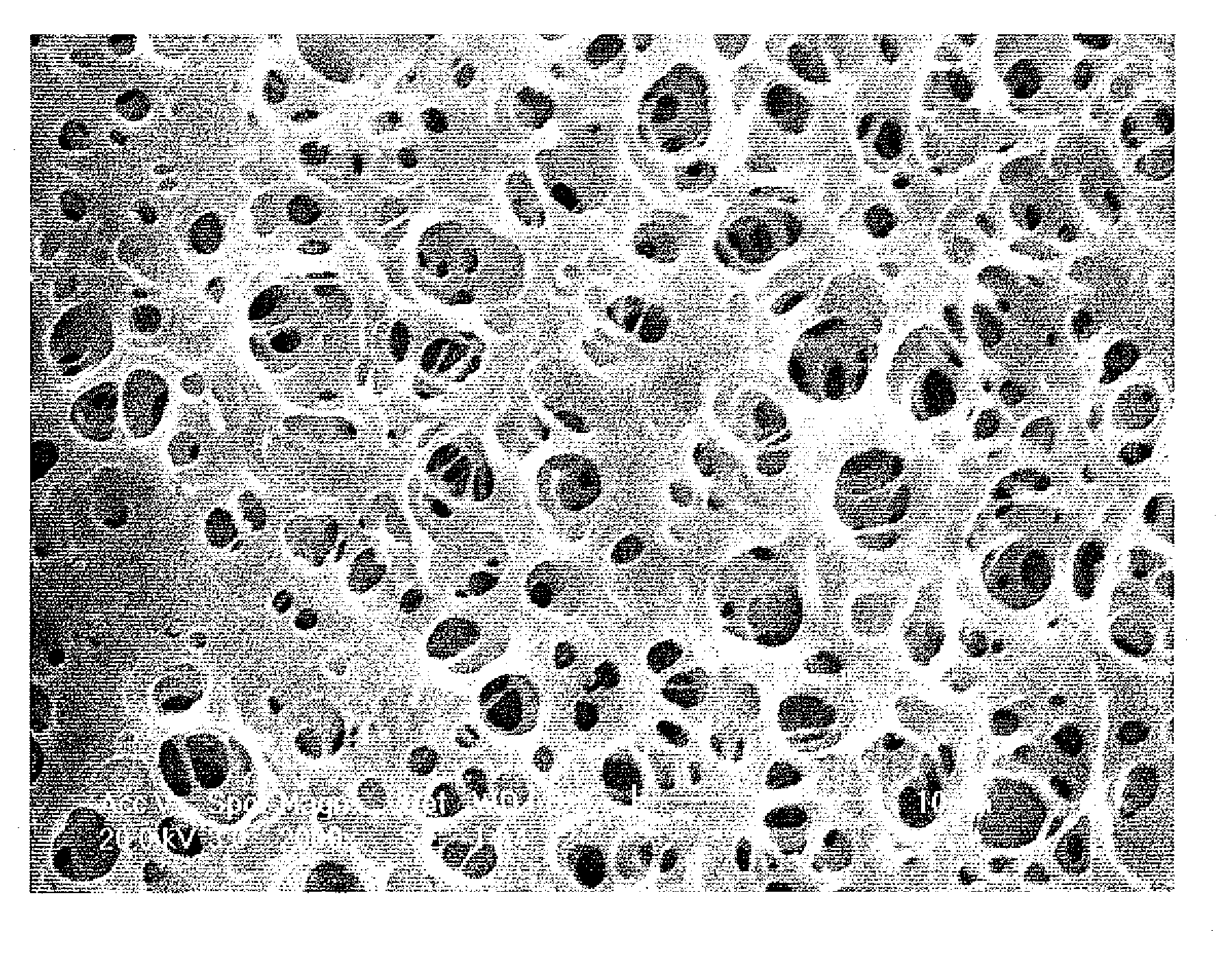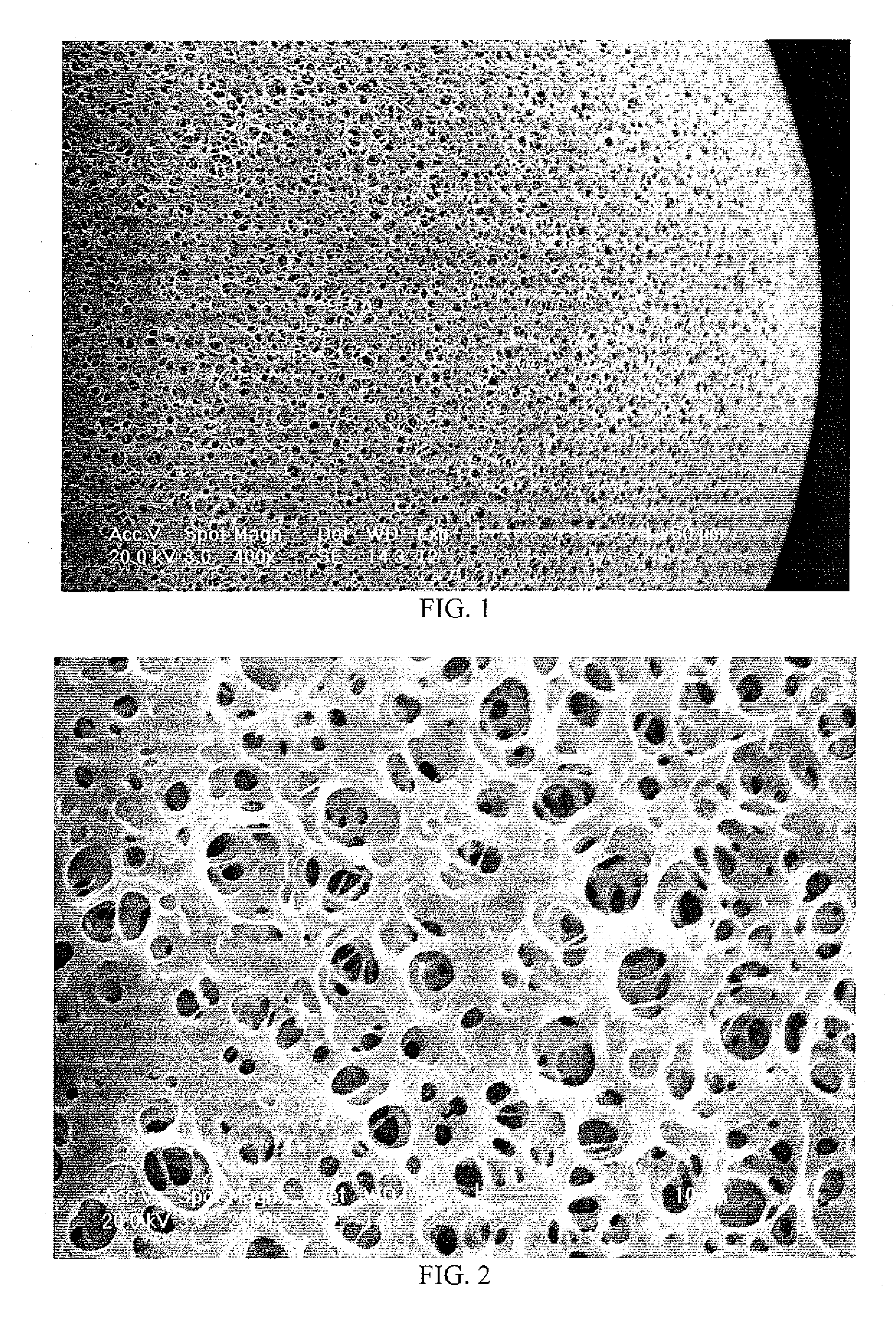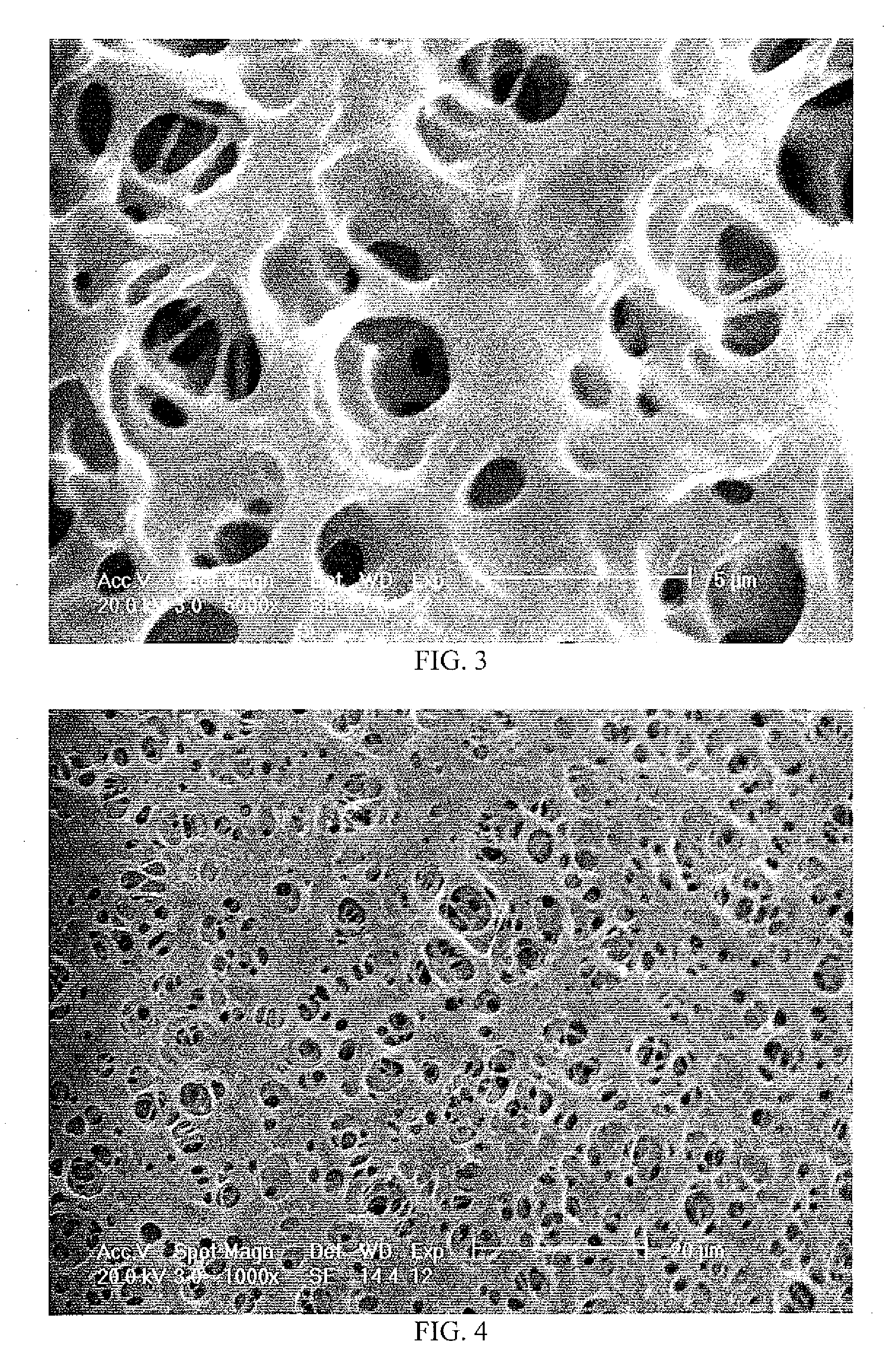Macroporous copolymers with large pores
a copolymer and macroroporous technology, applied in chemical/physical processes, water/sewage treatment by ion exchange, separation with moving sorbents, etc., can solve the problems of reducing the exchange affecting the stability requiring a relatively long time to reach the equilibrium of the exchange equilibrium, etc., to achieve the effect of large and extraordinary pores and enormous strength increas
- Summary
- Abstract
- Description
- Claims
- Application Information
AI Technical Summary
Benefits of technology
Problems solved by technology
Method used
Image
Examples
example 1
Synthesis of Copolymers
A. Synthesis Using Methyl Isobutyl Carbinol (MIBC)
[0088]
Water phaseMonomer mixtureWater1,000mlStyrene390 gTSP•12H2O50gDivinylbenzene (80%) 10 gCaCl2•2H2O50gMIBC320 gHydroxyethylcellulose3gAzobisisobutyronitrile 2 gLignosulfonate3gBenzoperoxide (BPO) (75%) 4 gSalt (NaCl)100g
[0089]Procedure:[0090]Place water in 2-liter stirred reactor.[0091]Add the trisodium phosphate (TSP) and CaCl2 [0092]Add a mixture of the hydroxyethylcellulose and the lignosulfonate, and stir until dissolved.[0093]Add the salt.[0094]At 84° C. add the monomer mixture and polymerization at 80° C. for 1 hr 20 min.[0095]Polymerization: 4 hr at 82° C.; 1 hr at 88° C.[0096]Heat to distill off MIBC over time.[0097]Cool, sequentially wash the copolymer (0th order IPN) with water, dilute acid, dilute caustic, water, and dry, then sieve as wanted.
B. Synthesis Using Isobutyl Alcohol (IBA)
[0098]
Water phaseMonomer mixtureWater1,000mlStyrene364gGelatin6gDivinylbenzene (63%)12gLignosulphonate1.4gIBA240gSa...
example 2
Formation of Interpenetrating Polymeric Networks (IPN's)
A. 1-Step Process
[0109]
1st Water phaseWater800mlSeeds from I.B., above160g2nd Water phase3% gelatin solution in DI water400mlNaNO20.04gMonomer mixtureStyrene241.4gDivinylbenzene (80%)30.6gBenzoyl peroxide (75%)3g
[0110]Procedure:[0111]Place 1st water phase and seeds in 2-liter stirred reactor.[0112]Heat to 60° C. and add monomer mixture.[0113]Stir at 60° C. for 2 hours.[0114]Then add the gelatine solution and nitrite (i.e., 2nd Water phase) and heat to 82° C.[0115]Polymerization: 3 hr at 82° C.; 1 hr at 92° C.[0116]Cool, wash the 1st-order IPN copolymer, dry.
[0117]A reaction using this procedure yielded 410 g (95%) of the polymer.
B. 2-Step Process
[0118]
1st water phaseWater600mlSeeds from I.A., above150gSDS4g2nd Water phase2.5% gelatine solution in DI water400mlNaNO20.04g1st Monomer mixtureStyrene175.5gDivinylbenzene (80%)4.5gBenzoyl peroxide (75%)3g2nd Monomer mixtureStyrene212gDivinylbenzene (80%)52g
[0119]Procedure:[0120]Place ...
example 3
Synthesis of a Strong-Acid Cation Resin
Step-1:
[0144]A 1 liter of water suspension was prepared using 45 g of trisodiumphosphate.12H2O, 45 g calcium chloride dihydrate, 10 g lignosulfonate, 2.8 g hydroxyethyl-cellulose and 105 g of NaCl.
[0145]When the salts were dissolved and the temperature of the solution had reached 80° C., a monomer solution composed of 426 mL of styrene, 14 mL of divinylbenzene (63%), 319 mL of isobutanol, 3 g of benzoyl peroxide (75%), 1.3 g of azobis-isobutyronitrile and 0.2 g Vazo-88™, was added.
[0146]The temperature was kept at 80° C. until the soft gel point, then it was increased to 82° C. and kept 4 hours at that temperature. The temperature of the batch was then increased to 85° C. for 1 hour and lastly to 95° C. for 2 hours.
[0147]The beads were washed and dried.
Step-2:
[0148]50 g of the copolymer obtained in the Step-1 was added to a solution of 800 mL of water with 1 g of sodium dodecyl sulfate.
[0149]The batch was heated to 82° C. When the batch reached...
PUM
| Property | Measurement | Unit |
|---|---|---|
| breaking weight | aaaaa | aaaaa |
| breaking weight | aaaaa | aaaaa |
| pore diameter | aaaaa | aaaaa |
Abstract
Description
Claims
Application Information
 Login to View More
Login to View More - R&D
- Intellectual Property
- Life Sciences
- Materials
- Tech Scout
- Unparalleled Data Quality
- Higher Quality Content
- 60% Fewer Hallucinations
Browse by: Latest US Patents, China's latest patents, Technical Efficacy Thesaurus, Application Domain, Technology Topic, Popular Technical Reports.
© 2025 PatSnap. All rights reserved.Legal|Privacy policy|Modern Slavery Act Transparency Statement|Sitemap|About US| Contact US: help@patsnap.com



